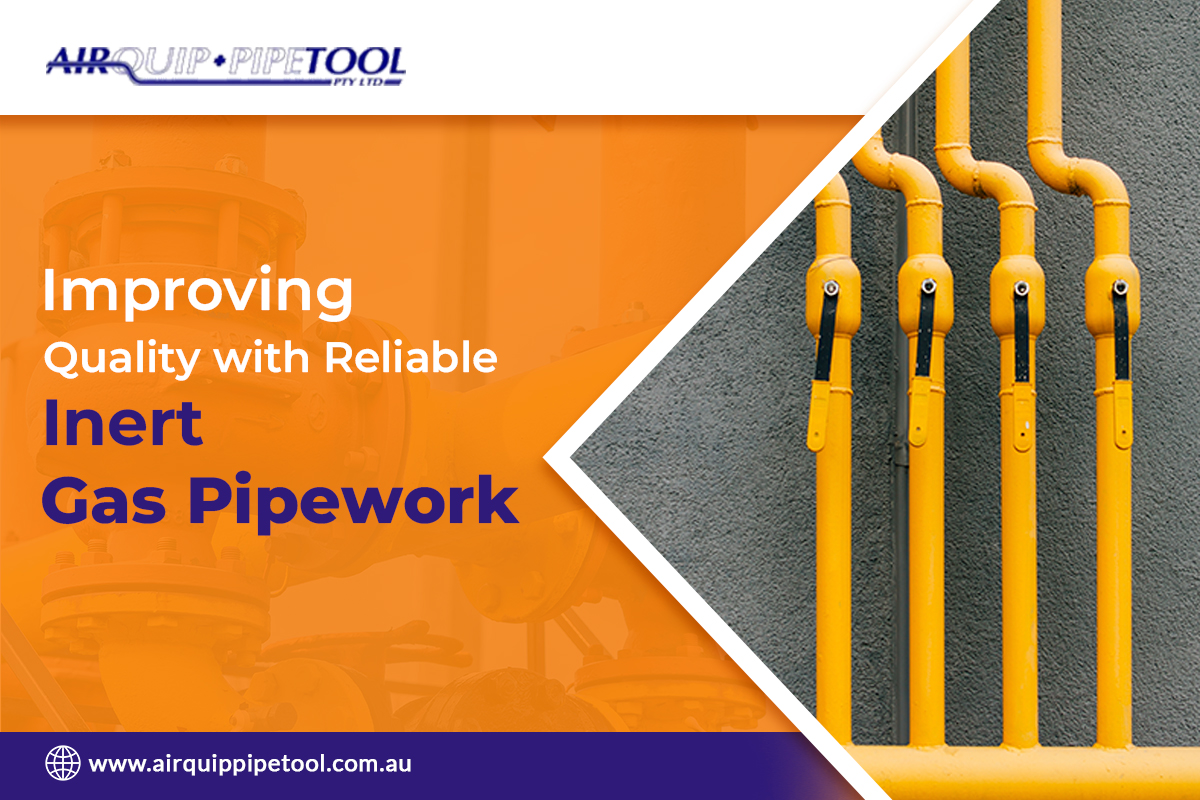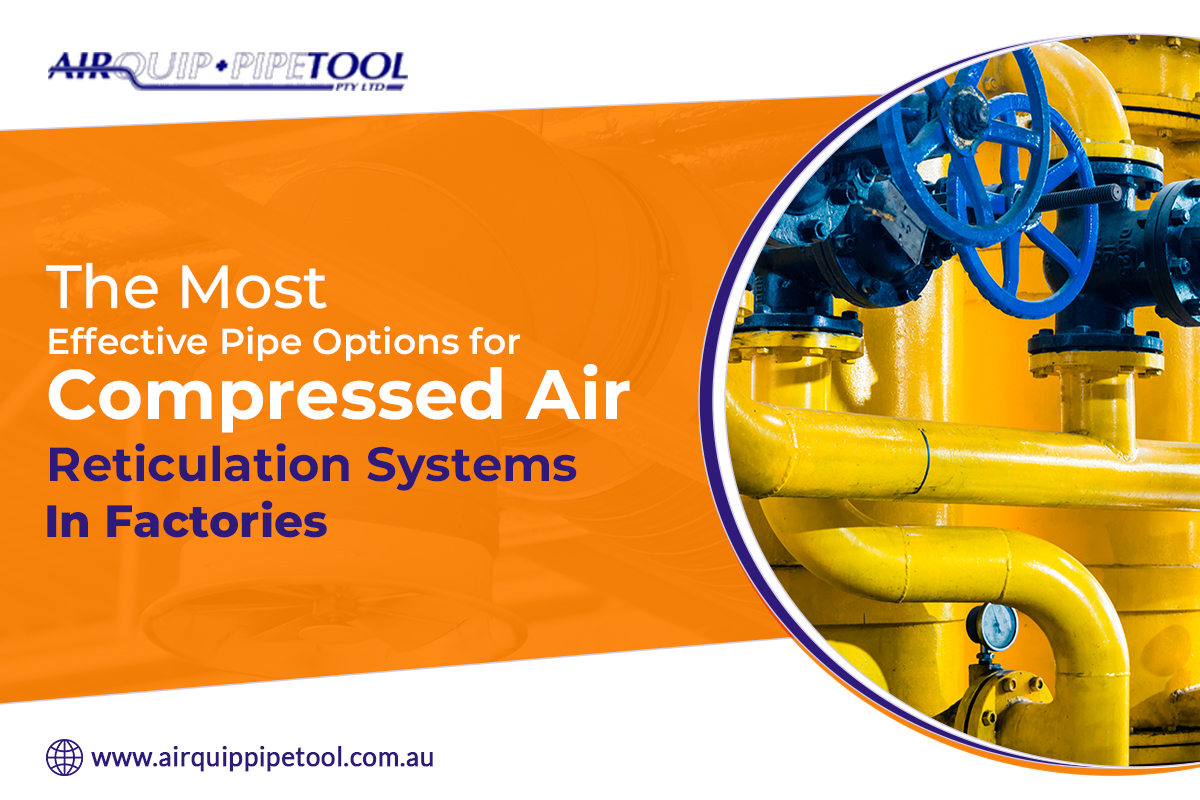- by airquippipetool
- . 28 Feb 2025
How to Prepare an Effective Compressed Air Pipe Work Distribution System? – Expert Tips
A good compressed air system is a means of transferring pressurised atmosphere (“air”) from the plant that pressurises it, to the point of use in your workshop. The compressed air is generated from an air compressor, and a good system of pipework and hoses means the pressure gets where you need it with minimal pressure drop and no leaks.
To do this properly, we need to use high quality compressed air pipe, fittings, and tube, that guarantee a firm, leak-free connection. These products should be installed by a professional technician to leverage their expertise and get you the best result for your facility.
Compressed air is used widely across many industries including garages, dockyards, concrete plants, power stations, and even home workshops. Find out the best advice for installing compressed air pipes from this detailed blog.
No compressed air system is perfect. Factors like pressure drop are consistent across every compressed air system and can only be minimised, not eradicated. Other factors which can be controlled with system design choices include;
Your compressed air professional should be able to provide you with advice on material, sizing, and installation options to balance these with your needs and get you the most suitable products.
For certain reasons – safety and legal/compliance being the most prominent – the following materials should never be used for compressed air:
Additionally, the following materials are not advised for use in compressed air:
Approved, safe choices for compressed air pipework include the following:
Material selection also needs consideration about the fitting style – whether welded, screwed, compression, pushfit, or crimped. Indoor or exposed to conditions detrimental to the life of the pipe. Will you need to remove the pipework in future (leased building)? And do you want to take the air system with you when you go? Are you installing this yourself (need tooling) or getting a professional compressed air technician to install it for you?
The way you – or your technician – design your compressed air system will have real and tangible effects on the usefulness of the system.
Air treatment – including condensate management and whether to use a “wet receiver” or a “dry receiver” will affect the quality of usable air at point of use. If you’re operating delicate machinery using compressed air, the manufacturer normally has some specific requirements for air quality and acceptable filtration levels. Condensate can also be managed by inclining the pipes instead of perfectly horizontal, drain points, additional filtration, and dryers.
Design of the air system, whether it be a ring main or a fishbone system, has benefits in relation to airflow at point of use and some designs have advantages over others especially when multiple users are depending on compressed air concurrently. Layout of the pipes should be optimised to minimise bends and sudden changes of direction, similarly any restriction point, to avoid unnecessary pressure drop.
Sizing the air system, similarly, is a key factor where the advice is generally to go as big as you can within budget/physical constraints to allow for future expansion where foreseen. With refrigerated air dryers, they often need to be sized up to 30% bigger than their manufacturers’ data recommends as they often have been engineered and tested overseas and need de-rating in Australian conditions. Conversely cyclonic water separators need to be sized exactly for the airflow at point of use to be effective.
If you are looking to install the right compressed air pipe solutions, the first thing to do is get accurate advice from a qualified professional. At Airquip and Pipetool, we have had 30 years of experience installing compressed air pipework and know the ins and outs of successful design. We pride ourselves on being the experts in the compressed air market and offer a comprehensive air compressor service throughout Adelaide.
Our reputation in the industry of air compressor repairs and fittings is based on deep expertise, extensive industry knowledge, meticulous attention to detail, impeccable presentation, and an unwavering commitment to customer satisfaction.
Get in touch with our team and see how we can help you achieve the maximum efficiency for your compressed air system.
Choose high-quality compressed air pipes and fittings installed by experts to ensure efficiency, safety, and minimal pressure loss in your system.
 " alt="">
" alt="">
How to Prepare an Effective Compressed Air Pipe Work Distribution System? – Expert Tips
 " alt="">
" alt="">
 " alt="">
" alt="">
The Most Effective Pipe Options for Compressed Air Reticulation Systems in Factories



Copyright © 2025 airquippipetool | All rights reserved